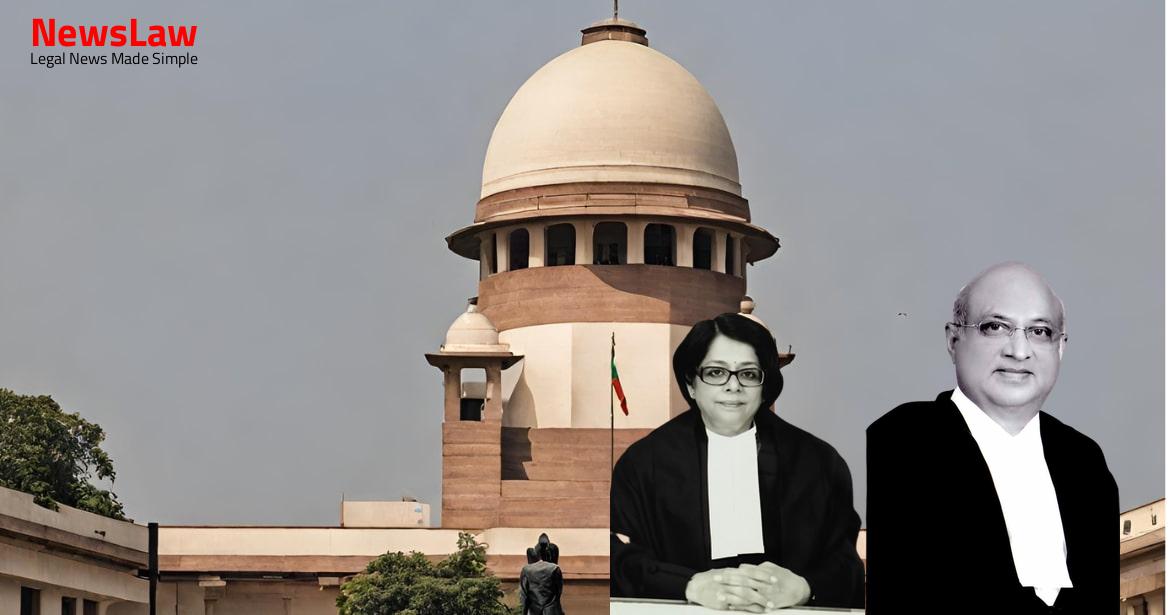In a landmark case concerning the interpretation of the EPF Act, the Supreme Court of India delivered a crucial judgment on the classification of women workers in the garment industry as ’employees’. The dispute between the parties revolved around whether the women workers, provided with materials to make garments at home, fell under the definition of ’employee’ as per Section 2(f) of the EPF Act. The ruling has far-reaching consequences for labor laws and social welfare.
Facts
- The Provident Fund Officer issued a Show Cause Notice to the Respondent Company to pay the Provident Fund contributions for the women workers.
- The Respondent Company claimed that the women workers were not their employees and hence not covered by the EPF Act.
- The women workers were provided with materials to make garments at their own homes.
- The Respondent Company argued that they did not exercise supervisory control over the women workers.
- The Balance Sheet of the Respondent Company revealed discrepancies in the number of employees stated.
- The Respondent Company was directed to pay the assessed amount within 7 days.
- The Appellant filed the Civil Appeal challenging the Order passed by the Bombay High Court.
- The Appellant contended that the women workers were covered under the definition of ’employee’ in the EPF Act.
- The Writ Petition filed by the Respondent Company was allowed by the Bombay High Court, Aurangabad bench.
- The Order dated 19.04.1993 passed by the Appellant No 1 was set aside.
- The Final Judgment and Order dated 27.04.2012 was issued in favor of the Respondent Company.
Also Read: Compassionate Appointment Case: Supreme Court’s Landmark Ruling
Issue
- The issue at hand is whether the women workers employed by the Respondent Company fall under the definition of ’employee’ as per Section 2(f) of the EPF Act.
- Section 2(f) of the EPF Act defines ’employee’ as any person employed for wages in any work, manual or otherwise, in connection with the establishment and receiving wages directly or indirectly from the employer.
- The definition of ’employee’ is broad and inclusive, covering those employed by contractors or engaged as apprentices, excluding those under the Apprentices Act, 1961.
- The crux of the issue is to determine if the women workers in question meet the criteria laid out in the definition of ’employee’ under the EPF Act.
Also Read: Tokas v. Insurance Company: Multiplier Application and Compensation Enhancement
Arguments
- The Appellants argued that the women workers employed by the Respondent Company are covered by the definition of ’employee’ under Section 2(f) of the EPF Act.
- The Appellants contended that based on the decision in M/s P.M. Patel & Sons and Ors. v. Union of India and Ors., the Respondent Company is liable to pay Provident Fund contribution for the women workers.
- The arguments put forth by the Appellants were supported by Mr. R.R. Rajesh, their learned Counsel.
- The women workers were independent contractors working from their homes.
- They did not work at the production centers of the Respondent Company.
- The work they did could be done by anyone on their behalf.
- The Respondent Company had no supervisory control over the women workers.
- There was no employer-employee relationship between the Respondent Company and the women workers.
- The women workers were not considered employees under Section 2(f) of the EPF Act.
- They were not required to report to the production centers regularly.
- They were not bound to work at the production centers.
- The sewing machines used by the women workers were owned by them, not provided by the Respondent Company.
Also Read: Land Acquisition Dispute: Competent Authority’s Compliance Under Scrutiny
Analysis
- The women workers employed by the Respondent Company were provided with all the necessary raw materials for their work, including fabric, thread, buttons, etc.
- The women workers were required to stitch garments as per specifications given by the Respondent Company.
- The test used in the past to determine the relationship between employer and workers was the test of control, not the method of payment.
- The fact that women workers stitched garments at home made no difference as it was a simple operation performed by many illiterate workers.
- The existence of the master-servant relationship was supported by evidence showing rejection in the presence of home workers.
- Women workers were covered by the definition of ’employee’ under Section 2(f) of the EPF Act as per judgments cited.
- Women workers were paid wages directly by the Respondent Company on a per-piece basis for every garment stitched.
- The EPF Act is a beneficial social welfare legislation for the benefit of workmen.
- The Tribunal’s error was in concluding that piece-rate payment negates the master-servant relationship, suggesting independence as contractors.
- The Tribunal’s misunderstanding of piece rate was highlighted given the common industry practice where payment is correlated to production.
- Piece rate payment is a recognized mode of payment for industrial workmen.
- Control and supervision in the employer’s right to reject the end product or refuse work establishes a master-servant relationship.
- Piece-rate payment does not indicate an independent contractor relationship.
- Home workers rolling beedis are considered employees of the company due to control and supervision elements.
- The right of rejection and supervision elements are present even if the work is carried out off-site.
- Interpreting EPF Act provisions beneficially for the workmen is essential.
- The employer’s right to reject work and direct rework shows control and supervision.
- Supervision needs to be interpreted harmoniously, not too broadly or narrowly.
- Effective supervision and control are necessary for the definition of an employee under the EPF Act.
- Supervision does not need to be constant but should include monitoring and direction.
- The decision in the C.E.S.C. Limited case is not directly applicable to the present case.
- The P.M. Patel & Sons case highlighted the inclusion of workers under the employee definition despite working from home.
Decision
- The Order dated 19.04.1993 passed by Appellant No 1 is restored.
- The judgment passed by the Bombay High Court vide the Impugned Order dated 27.04.2012 is set aside for being contrary to settled law.
- The Respondent Company is directed to deposit the amount assessed by Appellant No 1 towards Provident Fund dues of the women workers within 1 month.
- The Civil Appeal is allowed as per the terms mentioned.
- All pending Applications, if any, are disposed of accordingly.
Case Title: THE OFFICER IN CHARGE, SUB REGIONAL PROVIDENT FUND OFFICE AND ANR. Vs. M/S GODAVARI GARMENTS LIMITED
Case Number: C.A. No.-005821-005821 / 2019



